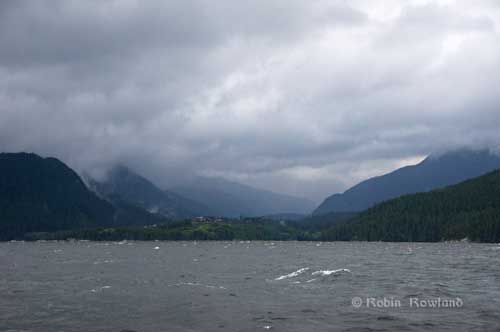Analysis
If there are any doubts about the confusing nature of National Energy Board hearings, at least for the public, as opposed to energy lawyers, that can be found in the decision relating to the application for the KM LNG limited partnership to export natural gas. The NEB granted a licence that will allow the partners, Apache, Encana and EOG to export natural gas to Asia for the next 20 years.
One of the questions at the hearings, with many people in the northwest also worried about the upcoming Joint Review Panel hearings on the proposed Enbridge Northern Gateway pipeline, was what about the environmental effects of the natural gas pipeline?
It all depends on the legal terms “necessary connection.”
During the briefings in Kitimat months before the actual June hearings, NEB officials said that the environmental implications of the natural gas project would not be part of the consideration because the board’s mandate in this case was whether or not to grant the export licence. The NEB officials said that since the Kitimat LNG project was almost entirely within the province of British Columbia, the environment was the responsibility of the province, not the board nor the federal government.
At the LNG hearings, lawyers for the energy companies made similar arguments, as the NEB decision relates, saying that KM LNG’s lawyers maintained that there was no “necessary connection” between the pipeline and the environment and so “noted that the Board is no longer required to conduct environmental assessment for gas export licence applications because those applications, unlike certain facilities applications do not trigger an environmental assessment under the CEA [Canadian Environmental Assessment ] Act and the only environmental side effects, if any, the board could consider would be those not already studied by the province.”
(The January hearings on the Enbridge pipeline are different because that in terms of the NEB mandate is a “facility” hearing, not a simple licence hearing and therefore portions of the federal Environmental Assessment Act come into play.)
In the decision, the board members rejected those arguments:
First, the board said that even if the application does not trigger a CEA Act assessment, “that does not preclude the Board from considering potential environmental effects and directly related social effects of gas exports when assessing the application.”
The NEB went on to to note that the board has found a “necessary connection” in previous gas export applications, therefore: “The Board will consider environmental and related social effects of a proposed export if those effects are necessarily connected to the exportation….”
So the board found that it did have the jurisdiction to examine the environmental effects of marine shipping activities, the natural gas terminal and the Pacific Trails Pipeline that would lead to the terminal at Kitimat.
On the pipeline and the terminal, the board then says: “that no evidence was placed on the record to suggest that there are any environmental effects directly connected to this proposed export that has not already been addressed by the appropriate regulatory agencies.”
As for the effects of marine activities the NEB says the Transport Canada TERMPOL process (which is also looking at the bitumen tankers that will be on the coast if the Enbridge project goes ahead) was sufficient.
The Board is of the view that potential environmental effects and directly related social effects have been considered ….or will be considered through TERMPOL….Based on the foregoing, the Board is of the view that work conducted under the relevant federal and provincial legislation and process is not warranted and the Board has been able to to adequately consider the environmental and related social effects in making a decision on the export licence.
In other words, the National Energy Board ruled that it can maintain its jurisdiction over the environment, if necessary, but not necessarily do anything about it, if someone else is apparently already doing the job.
As was frequently pointed out in the June hearings, the NEB mandate is what is called “Market-Based Procedure” when it comes to natural gas. That policy came into effect in 1987, and was founded “on the premise that the marketplace will generally operate in such a way that Canadian requirements for natural gas will be met a fair market prices.”
The year 1987, of course, was at the height of the political and economic love affair with the marketplace. Now in October 2011, the “Occupy” demonstrations in almost every major city on this planet and many small towns, show that this love affair has gone sour.
While the Enbridge Northern Gateway Joint Review has a wider mandate, the problem remains.
No image of planet Earth shows national boundaries. Nor does an image of planet Earth show the bureaucratic fault lines between the National Energy Board, Transport Canada, the Environmental Assessment Agency, not mention the provincial agencies.
The mandate for the NEB is more than 25 years out of date. National Energy Board hearings are limited by narrow rules of procedure which the energy company lawyers try again and again to use to their advantage.
These problems aren’t going to go away as the natural gas rush accelerates.
No one is looking at the “big picture.” Who knows what will fall through the cracks? No one ever cares about the unexpected consequences until there is 20/20 hindsight.
The problem, of course, is that there is no recourse for this problem. Stephen Harper’s government is cutting staff at Environment Canada, defunding environmental advocacy and watch dog groups (even those supported by industry) and like all conservatives somehow think that more deregulation will somehow bring back the jobs that the deregulated financial sector destroyed.
The NEB notes that the 1985 Western Accord that set up the current rules for the board is also called the “Halloween Agreement.”
Scarey.
National Energy Board decision on KM LNG
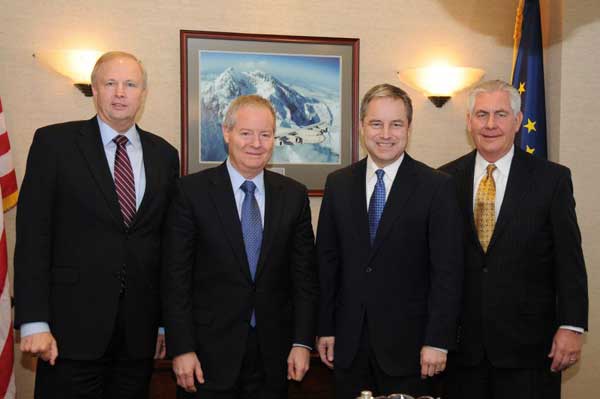
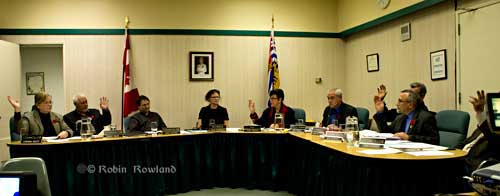
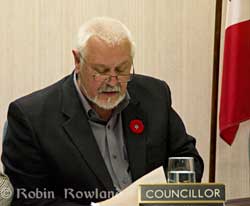 Halyk then accused the current mayor, Joanne Monaghan of withholding information from the rest of
Halyk then accused the current mayor, Joanne Monaghan of withholding information from the rest of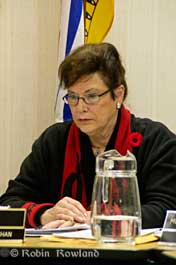 Monaghan replied by simply saying that she had had conversations with various industry representatives visiting Kitimat and that often those people visiting Kitimat had requested confidentiality. She emphasized that she had never signed a letter of intent without disclosing information to District Council.
Monaghan replied by simply saying that she had had conversations with various industry representatives visiting Kitimat and that often those people visiting Kitimat had requested confidentiality. She emphasized that she had never signed a letter of intent without disclosing information to District Council.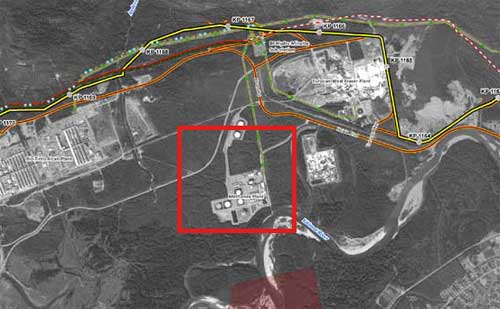 The former Methanex site is seen the red square in this map of the Kitimat service centre prepared by Enbridge as part of its Northern Gateway pipeline proposal and filed with the Joint Review panel. The yellow line is the proposed Enbridge bitumen pipeline. The dark red line is the proposed pipeline that would feed the Kitimat LNG and likely the BC LNG projects, where the red pipeline route has white, that is the Pacific Trails Pipeline. See
The former Methanex site is seen the red square in this map of the Kitimat service centre prepared by Enbridge as part of its Northern Gateway pipeline proposal and filed with the Joint Review panel. The yellow line is the proposed Enbridge bitumen pipeline. The dark red line is the proposed pipeline that would feed the Kitimat LNG and likely the BC LNG projects, where the red pipeline route has white, that is the Pacific Trails Pipeline. See